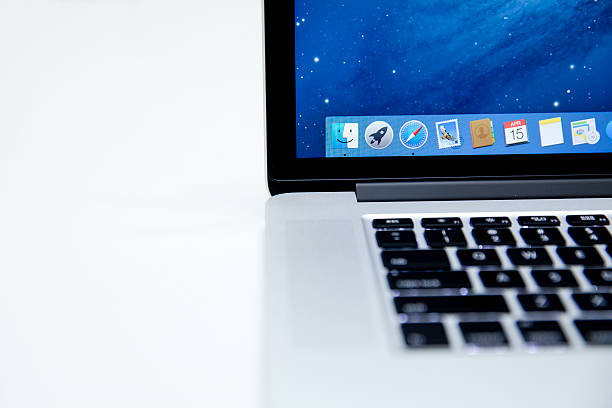How To Keep Your Mac Privacy Protected

Getting started on a Mac is pretty straightforward owing to the assistance of an inbuilt set-up assistant as a guide. Nonetheless, for privacy-conscious Mac users, it’s important to ensure that Mac security settings are configured catering to their expectations and specific needs.
Apple’s drive to protect its Mac users is directly proportional to the increasing number of security settings being released now and then, making it increasingly challenging to configure new patches. Regardless of whether you’re setting up a new Mac or updating to the latest version of macOS, one should never forget to check the latest Mac privacy settings.
A hard disk failure, for instance, is not the only way in which data contained in the Mac can be lost; several severe reasons indicate the need to regularly backup your important data and files. Additionally, downloading files from untrusted networks and exchanging unauthorized files with other users is risky too, and Macs are prone to becoming more vulnerable to such potential threats since the Mac security mechanism can be exploited more easily compared to Windows. There are numerous actions that you can take to manage your Mac devices, regardless of whether you use them at home or work.
These are easy steps you can take to safeguard your personal data when using macOS or Mac OS X.
. Keep your identity safe by using a password manager
Mac users should create complex, unique passwords so they’re more difficult to crack. It is always recommended for Mac users to create strong passwords and to never reuse them across multiple websites. Using simple passwords enables the risk of exposing your user name and password combination to a potential cyber hacker, which they can then use to access across multiple sites.
As a rule of thumb, the harder your password is to remember, the faster you will forget them. By using a password manager such as Lastpass, Logmeonce, Vault, etc., you can access your hard-to-remember passwords using a single, master password. In addition, macOS and iOS Keychain can store passwords, automatically fill them, and sync them across multiple devices using iCloud.
-
Turn off automatic login
During the initial setup of a Mac or when you upgrade your Mac to the latest operating system version available, you are prompted to create a new user account. This user account can be configured to auto-login every time after the system boots. If you are using your Mac device at home, it might be okay to enable auto-login, but if you use your Mac in an enterprise set-up, it might not be feasible to invite such a serious risk. If your Mac has automatic login enabled, anyone who finds it – or steals it – will only need to start it up to access your files.
-
Install a two-way firewall for outbound/inbound protection
The firewall inbuilt into Apple’s operating system only provides inbound network security. Inbuilt firewall protection only thwarts a few kinds of attacks. Multiple layers of protection are vital in defending against unidentified malware and targeted attacks, as they are becoming more frequent.
Your Mac must not connect to the Internet for you to be protected against unidentified malware – only firewalls that offer outbound protection offer that level of protection.
By combating inbound threats and preventing malicious programs on your Mac from communicating with the Internet, two-way firewalls can offer meaningful protection. By doing this, you can protect your data from eavesdropping while restricting access to your Mac.
-
Consider using a VPN
If you mostly do online shopping on your Mac while connected to public Wi-Fi networks, such as those in an airport, coffee shop, or other public wireless networks, you might consider using VPN software.
By using a Virtual Private Network (VPN), you will be able to encrypt all the data on your Mac. It will safeguard your network from potential hackers sniffing the web to steal user credentials and passwords, credit card numbers, and other sensitive data.
VPN protects your privacy by masking your IP address, which prevents websites from knowing where you are. Additionally, as your communications are encrypted, your web history cannot be tracked by your Internet Service Provider.
With a Mac device management solution, any remote employees working at any organization can connect their managed Mac devices or BYO devices to a secured VPN administered and configured via the dashboard for securing business-critical assets too.
-
Keep your software updated frequently
Apple Macs are potentially susceptible to a variety of security threats, from malware to vulnerabilities, and updates to macOS, like any other operating system available in the market, are regularly released to fix these issues. As a result, keeping your software up-to-date is vital to thwarting new cybersecurity threats.
You can check the availability of macOS’s latest software updates and stay ensured by visiting System Preferences > Software Update on your Mac device. Alternatively, some apps can be updated directly from the Mac App Store itself, while others can be updated by themselves.
-
Enable full-disk encryption with FileVault
Apple’s FileVault full disk encryption is an effective way to protect your personal data on your Mac. It has been around for a few years on Macs, and it performs well without causing a significant slowdown. With FileVault, your entire hard drive is encrypted through XTS-AES 128 with a 256-bit key, a very secure encryption algorithm.
In case your Mac’s drive is not fully encrypted, anyone who steals it can access any data stored on it. The drive of your Mac is immediately locked after you shut down your Mac with FileVault enabled. Access to the contents of a locked drive is given only to authorized users who turn on the Mac and log in.
In order to enable FileVault, you’ll need to log into macOS with an administrator account and click Security & Privacy > FileVault. Once there, click Turn on FileVault.
Closing lines…
Keeping these security measures in place will help ensure you do not fall victim to the next big threat. Prevention is better than cure, implementing these tips will make it much more difficult for hackers to access it. Taking heed of these instructions will help you secure your Mac and keep your information protected.
There are several security features built-in to Mac devices that have made them a preferred choice among several organizations concerned with their business security. For organizations to wirelessly deploy security deliverables across a fleet of Mac devices, Mac Management Software is the easiest option.
Author Bio:
Ayush Maskara is a Content Writer at Scalefusion (Mac Device Management). A media science graduate, a photographer, a fiction author, a storyteller, a fiction manuscript editor, and an avid self-help reader, Ayush has been penning the creative wisdom for six years and have stepped into the IT domain for further exploration and staying awake with technological trends across the globe.






